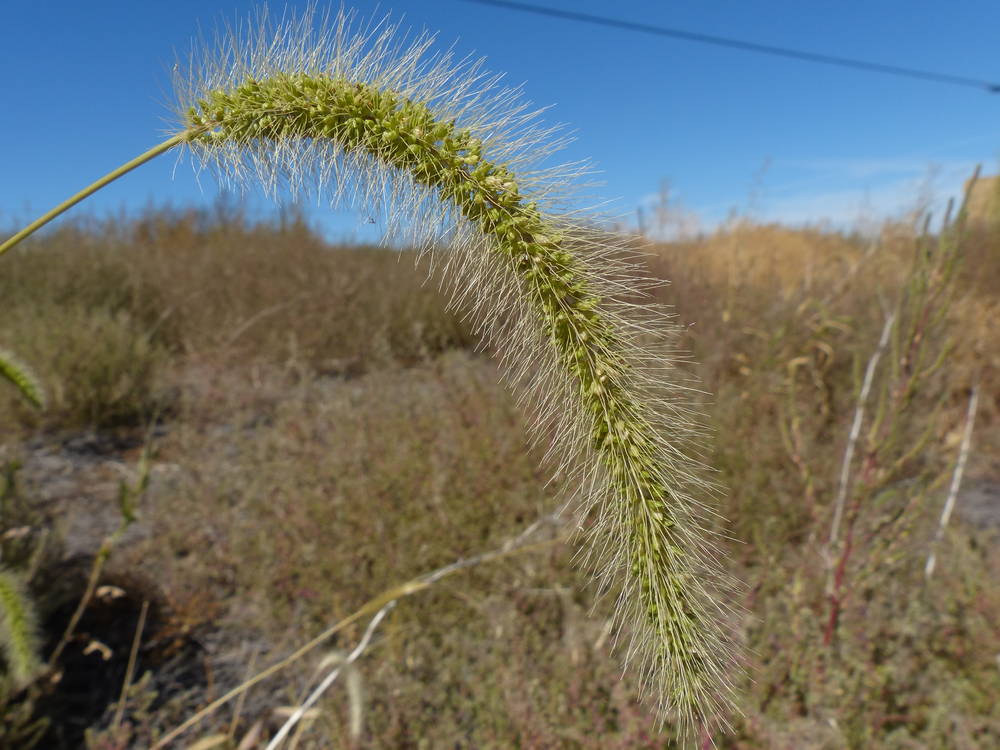Setaria adhaerans
Setaria
foxtail
erect or decumbent, 10–600 cm tall.
sheaths open;
ligules membranous and ciliate or comprised of hairs;
blades flat or folded.
terminal panicles, usually dense and spike-like;
disarticulation usually below the glumes spikelets falling intact but leaving the bristles behind (disarticulation between the lower and upper florets in cultivated S. italica).
dorsiventrally flattened or round in cross section, ellipsoid, rarely globose, subsessile or on short pedicels; in clusters or single on short branches; some or all spikelets subtended by 1–several bristles.
lower glumes less than half as long as the spikelets, 1–7-veined;
upper glumes half to nearly equal the upper lemmas in length, 3–9-veined.
small, ellipsoid to subglobose, dorsiventrally compressed.
lower florets staminate or sterile; lower lemmas equaling or rarely exceeding the upper lemmas, rarely absent, 5–7-veined; upper florets bisexual; upper lemmas and paleas hard and transversely rugose or rarely smooth.
3.
Setaria adhaerans
Setaria
Tropical and warm-temperate regions worldwide. Approximately 140 species; 3 species treated in Flora.
Most Setaria species are weeds of disturbed areas, including crop felds and are of major economic importance in some areas. One species, S. italica, foxtail millet, is cultivated for grain. It is similar to S. viridis but its inflorescences are usually wider and its spikelets are about 3 mm. The common name “foxtail” is shared with the genus Alopecurus, which has awns in the inflorescence but no bristles. Setaria parviflora was collected in Portland in 1916 but did not persist. It is native to the southern half of the United States, Central America and the West Indies. It is a rhizomatous perennial with scabrous leaves that lack hairs and upper glumes half to two-thirds as long as the spikelets. Setaria viridis var. major was collected in Portland in 1920, but apparently it has not persisted. It is 100–250 cm tall with leaf blades 10–25 mm wide and panicles 10–20 cm.
Barbara Wilson, Richard Brainerd, Nick Otting
- Local floras:
CA,
OR,
WA
- Local Web sites:
CalFlora,
CalPhotos,
Flora NW,
PNW Herbaria
WildflowerSearch
iNaturalist (observations)
USDA Plants Database
- LBJ Wildflower Center
- SEINet
- Plants of the World Online
- Encyclopedia of Life
- Wikipedia
- Google Image Search


